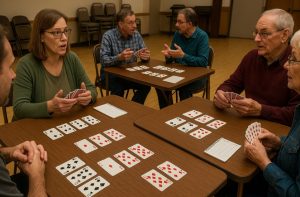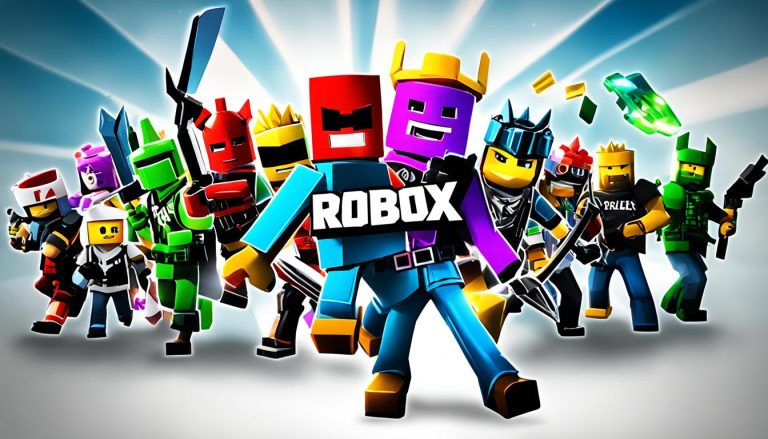The Oh Hell card game is a classic British-born trick-taking game that combines strategic bidding with a dash of luck and plenty of suspense. Whether played casually among friends or competitively, it offers a compelling blend of prediction, planning, and precise execution.
From its early 20th-century origins to its many modern variants, Oh Hell remains a favourite for card game enthusiasts across the UK and beyond.
This comprehensive guide explains its rules, gameplay, variants, strategies, and scoring helping beginners learn quickly and seasoned players sharpen their game.
What Is the Oh Hell Card Game and Where Did It Originate?

The Oh Hell card game originated in England around the 1930s. Initially called Oh! Well, it was first documented by B. C. Westall and later gained popularity through regular reprints by Hubert Phillips.
Despite its British origin, the game quickly crossed over to the United States where it became known as Oh Pshaw or Oh Hell, the latter becoming the most commonly used name.
Over time, several regional names and variations have evolved, including Contract Whist, Nomination Whist, Blackout, Elevator, Jungle Bridge, and Up and Down the River.
Despite the different names and formats, the fundamental principle of the game has remained unchanged: each player must predict and win exactly the number of tricks they bid at the beginning of each round.
How Do You Set Up the Oh Hell Card Game?
To set up the Oh Hell card game, a standard 52-card French deck is used. The game is designed for three to seven players, with four or five being ideal for balanced gameplay. All cards are ranked in their usual order, with Aces high.
Cards are dealt clockwise starting with the player to the left of the dealer. The number of cards dealt per player varies depending on the round and the version of the game being played.
Once the cards are dealt, the next card in the deck is flipped face-up to determine the trump suit for that round. This trump suit can override the led suit during trick-taking.
There must also be a scorekeeper responsible for tracking players’ bids and scores. Bidding occurs immediately after dealing and before any cards are played.
What Are the Core Rules of the Oh Hell Card Game?
Oh Hell is a trick-taking game where each player competes to take exactly the number of tricks they bid. Players are required to follow suit if they are able.
If they cannot, they may play a trump card or discard any other card. The highest card in the trump suit wins the trick; if no trumps are played, the highest card in the led suit takes it.
Dealing, bidding, and gameplay proceed clockwise. The player who wins a trick leads the next. In each round, all players have a chance to make strategic decisions about when to play high cards, when to lose tricks intentionally, and how to calculate bids based on the number of cards in hand and the revealed trump suit.
How Do You Play the Oh Hell Card Game Step by Step?

The gameplay unfolds in several structured phases. Each round involves the following steps:
- Cards are shuffled and dealt based on the number of players and the current round’s pattern (e.g., 1 to 10 ascending or 10 to 1 descending).
- The next card from the deck is turned over to set the trump suit.
- Players place their bids in turn, predicting how many tricks they expect to win.
- The player to the dealer’s left leads the first trick.
- Each player plays one card, following suit if possible.
- The trick is won by the highest trump played, or the highest card in the led suit if no trumps are present.
- The player who wins a trick leads the next.
- After all tricks are played, the scorekeeper updates the points.
- The next round begins with adjusted card counts based on the variant.
In some versions, such as Contract Whist, the number of cards dealt per round follows a 7–1–7 sequence. In others, it may increase or remain static throughout.
How Does Bidding Work in the Oh Hell Card Game?
Bidding is a central mechanic that separates the Oh Hell card game from other trick-taking games. After cards are dealt and the trump suit is revealed, players must bid the exact number of tricks they believe they will win.
Bidding starts with the eldest hand and moves clockwise. Each player announces a number between zero and the maximum possible tricks in the round. In most variants, the dealer is restricted in such a way that the total number of bids cannot equal the number of available tricks. This rule ensures that at least one player will fail their bid, adding a layer of unpredictability.
Players must evaluate their hand carefully, considering both high and low cards, potential trump control, and opponents’ likely strategies.
How Is Scoring Handled in the Oh Hell Card Game?
Scoring systems can vary, but most fall into two main categories: simple and common. In both systems, players who hit their exact bid receive a significant bonus. Those who miss receive fewer or no points.
Here is a comparison of the most widely used scoring methods:
Scoring Systems Comparison
| Scoring Type | Points for Matching Bid | Points for Each Trick | Points for Missed Bid |
| Simple Scoring | 10 bonus | 1 point per trick | 0 |
| Common Scoring | 10 bonus | 1 point per trick | 1 point per trick only |
In some local rules, players who bid zero and succeed can earn anywhere from 5 to 10 points. Others award a scaled bonus based on the number of tricks in play. For instance, a successful zero bid in a round with seven tricks might earn 7 points.
The scorekeeper must be meticulous, especially in long games with many rounds. A typical game may end when a player reaches a target score like 100 or after a fixed number of rounds.
What Are the Main Variants of the Oh Hell Card Game?

The Oh Hell card game has developed a rich array of regional and rule-based variants over the decades.
While the core concept of bidding and trick-taking remains consistent, the number of cards dealt per round, scoring systems, and even bidding rules can vary significantly depending on the version being played.
These variations cater to different player preferences, adding depth and diversity to the game without altering its fundamental goal: to win exactly the number of tricks bid.
1. Oh! Well (Original British Version)
This is the earliest documented version of the game, originating in Britain. In Oh! Well, the number of cards dealt remains fixed in every round for example, each player receives seven cards per deal. It is often considered the most accessible variant, making it an excellent choice for beginners or younger players.
Gameplay Features:
- Played with 3 to 7 players
- The same number of cards dealt in each round
- Dealer reveals the last card as the trump
- Scoring: 1 point per trick, plus a 10-point bonus for making an exact bid
- The game typically continues until a player reaches 100 points
This version has a slower learning curve and is ideal for more relaxed, social settings.
2. Contract Whist (Also Known as Nomination Whist)
Popular across the UK, Contract Whist introduces more variation in gameplay by changing the number of cards dealt each round.
It uses a descending and then ascending pattern, commonly referred to as the 7–1–7 structure. This means players begin with seven cards in the first round, decreasing by one each round until only one card is dealt, then increasing back to seven.
Gameplay Features:
- Often played with 3 to 7 players
- Trump suit is determined by turning over a card after the deal
- The dealer is restricted in bidding to ensure total bids do not equal the number of tricks
- Scoring remains 1 point per trick, plus a 10-point bonus for correct bids
Contract Whist adds tension by forcing at least one player to fail their bid each round. The fluctuating number of cards also demands constant strategy adjustments.
3. Up and Down the River (Australia and New Zealand)
In this popular variant from Australia and New Zealand, the gameplay structure expands even further. The game starts with 10 cards dealt per player, decreasing to one card and then increasing again to 10. This version includes 19 rounds when played to full length.
Gameplay Features:
- Suitable for 4 to 8 players
- Played in a 10–1–10 card sequence
- The dealer must ensure that total bids do not match the number of tricks
- Scoring: 1 point per trick + 10-point bonus for accurate bids
Due to the extended number of rounds, this variant is ideal for longer play sessions and offers a more strategic long-term experience.
4. Oh Pshaw (North American Variant)
Oh Pshaw is widely played in the United States and Canada. It follows an ascending only sequence of card distribution.
Each round increases the number of cards by one until the deck is exhausted. For example, if four players are involved, the game lasts 13 rounds, beginning with one card per player and ending with 13.
Gameplay Features:
- Typically played with 3 to 5 players
- No restriction on the dealer’s bid
- In the final round, there may be no trump suit
- The scorekeeper must announce if bids are over, under, or exact
- Scoring usually involves 1 point per trick + 10 bonus for correct bids, though house rules vary
This version is particularly popular for its faster pace and flexibility in scoring rules, often played casually among friends.
5. British Oh Hell (Variant Similar to Oh Pshaw)
This version mirrors Oh Pshaw’s ascending card structure but includes unique British house rules. It is often played with bonus-only scoring, meaning that players only earn points if they match their bid exactly. No points are awarded for tricks alone.
Gameplay Features:
- Cards dealt increase each round (ascending only)
- Players may bid simultaneously using hand gestures (e.g. clenched fists and extended fingers)
- No scoring for unmatched bids or tricks
- Bonus points only for accurate predictions
This variant adds a layer of excitement and interaction, especially with the silent bidding mechanism.
What Strategies Can Help You Win the Oh Hell Card Game?
Effective strategies in the Oh Hell card game revolve around precise bidding and careful observation. Players who consistently evaluate their hands and adjust their bids accordingly tend to perform better over multiple rounds.
Here are a few focused strategies:
- Evaluate your hand strength relative to the trump suit.
- Count potential winners, especially high cards in non-trump suits.
- Avoid overbidding in early rounds with fewer cards.
- Keep track of which suits are being played out.
- Use trump cards sparingly unless you’re confident of winning the trick.
- Deny other players the chance to make their bids by disrupting sequences.
The dealer should also pay special attention during the bidding phase, particularly in variants where the total number of bids cannot equal the number of tricks.
How Does the Oh Hell Card Game Compare to Other Trick-Taking Games?
Oh Hell differs from other traditional trick-taking games in its emphasis on precise bidding. In Whist or Spades, the objective is to win more tricks than the opponents.
In Hearts, players often aim to avoid winning certain tricks. Oh Hell introduces a unique balance: players may need to win tricks or deliberately avoid them to match their bid exactly.
This creates a distinctive tension where success is based not only on skill but on the accuracy of one’s prediction.
Each round feels like a puzzle, as players must adjust their expectations based on how many cards are dealt and what trumps are in play.
Why Is the Oh Hell Card Game Still Popular Today?

The enduring popularity of the Oh Hell card game is largely due to its blend of accessibility and strategic depth. It can be taught quickly, yet offers layers of complexity that keep players engaged.
Its flexible player count and wide range of variants make it suitable for family gatherings, game nights, or competitive play. Its social aspect, with players interacting over bids, scores, and tactics, adds to the fun.
Even prominent figures like Bill Clinton are known to have enjoyed playing the game, further increasing its cultural footprint.
Oh Hell Card Game Rules Table – Variants Summary
| Variant Name | Card Deal Pattern | Bidding Restriction | Score Type |
| Oh! Well | Fixed (e.g., 7 each) | None | 1 per trick + 10 bonus |
| Contract Whist | 7–1–7 sequence | Dealer restricted | 1 per trick + 10 bonus |
| Up and Down the River | 10–1–10 sequence | Dealer restricted | 1 per trick + 10 bonus |
| Oh Pshaw | Ascending only | None | Trick + bonus or trick only |
| British Oh Hell | Ascending only | None | Bonus only if bid matched |
|
|
Conclusion
The Oh Hell card game remains a timeless classic, blending simple rules with deep strategic potential. Its unique bidding system sets it apart from other trick-taking games, making every round unpredictable and engaging.
With multiple variants suited to different skill levels and preferences, it continues to be a favourite for families, casual players, and serious enthusiasts alike. Whether played in person or online, Oh Hell offers an exciting challenge that keeps players coming back for more.
FAQs About the Oh Hell Card Game
What is the objective of Oh Hell?
To win exactly the number of tricks you bid no more, no less.
How many cards are dealt in each round?
It depends on the variant. Some go from 1 to 10 and back, while others stay fixed.
What happens if multiple players achieve their bid?
All players who hit their bid score full points. It’s not exclusive to one person.
Can you play Oh Hell with two players?
Technically yes, but the game is more strategic and balanced with 3–7 players.
Is there a standard number of rounds?
No. The number of rounds depends on how cards are dealt (ascending/descending).
Do you always use a trump suit?
Most variants do, though some rounds (like final deals) may be no-trump.
Is the Oh Hell card game suitable for children?
Yes. With simplified rules, it’s a great introduction to trick-taking for young players.
Related Articles:






